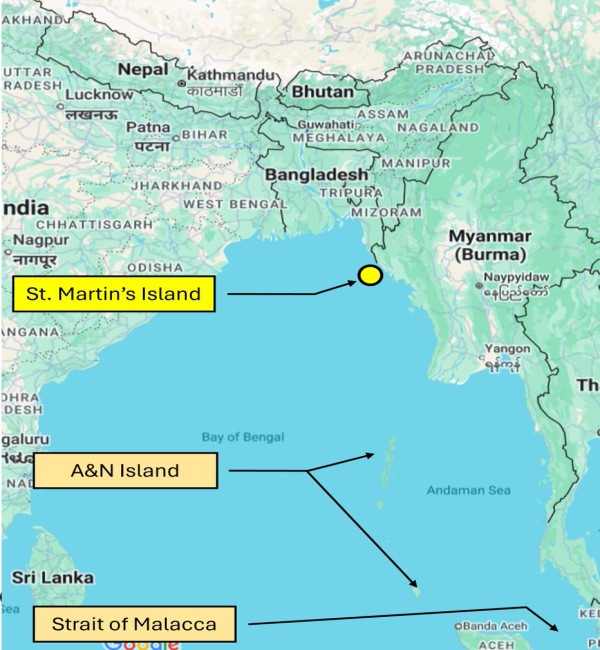Former Bangladesh Prime Minister Sheikh Hasina has accused the U.S. of plotting her ouster following her refusal to hand over a tiny island in the Bay of Bengal, says a report in the Economic Times.
“I could have remained in power if I had surrendered the sovereignty of Saint Martin Island and allowed America to hold sway over the Bay of Bengal,” she is quoted as saying in the report, which is based on a message sent through her aides. Sheikh Hasina is now in New Delhi.
Although tiny, (barely three sq km), the island of St Martin, which lies just 9 km south of mainland Bangladesh and 8 km west of Myanmar, is of immense strategic importance due to its location. Any foreign power perched there would have direct line of sight to Bangladesh, Myanmar and India, and by default, China, which has built a port in Myanmar as part of President Xi Jinping’s flagship belt and Road Initiative.
Sheikh Hasina had raised the issue of American interest in St Martin earlier too.
According to the Economic Times report, she had told parliament in April that “America is pursuing a strategy of regime change in her country. Awami League leaders close to Hasina blamed US for the regime change in Dhaka and alleged that a senior US diplomat who visited Dhaka in May was responsible for this.
“American Ambassador to Bangladesh Peter Haas who finished his term in July favoured the Bangladesh Nationalist Party, one of the leaders quoted above alleged,” said the report.
In May, Sheikh Hasina had publicly claimed that “If I allowed a certain country to build an airbase in Bangladesh, then I would have had no problem.” Conspiracies were being hatched to topple her government, she said, referred to a “white man’s” plot to carve a new “Christian country” out of Bangladesh and Myanmar.

St. Martin’s Island not only falls within Bangladesh’s EEZ, thus giving it access to marine resources like fish, oil, and gas, it also serves as a crucial reference point for Bangladesh’s maritime boundary with Myanmar, securing access to the Bay of Bengal.
The island’s location near the entrance of the Bay of Bengal makes it a strategic point for monitoring and controlling maritime traffic in the region.
If properly developed, it can serve as a hub for regional trade, connecting Bangladesh to Southeast Asia and beyond.
It could also serve as a forward operating base for the Bangladesh Navy, allowing it to project influence in the region, promoting regional cooperation and stability.
In a career spanning three decades and counting, Ramananda (Ram to his friends) has been the foreign editor of The Telegraph, Outlook Magazine and the New Indian Express. He helped set up rediff.com’s editorial operations in San Jose and New York, helmed sify.com, and was the founder editor of India.com.
His work has featured in national and international publications like the Al Jazeera Centre for Studies, Global Times and Ashahi Shimbun. But his one constant over all these years, he says, has been the attempt to understand rising India’s place in the world.
He can rustle up a mean salad, his oil-less pepper chicken is to die for, and all it takes is some beer and rhythm and blues to rock his soul.
Talk to him about foreign and strategic affairs, media, South Asia, China, and of course India.





